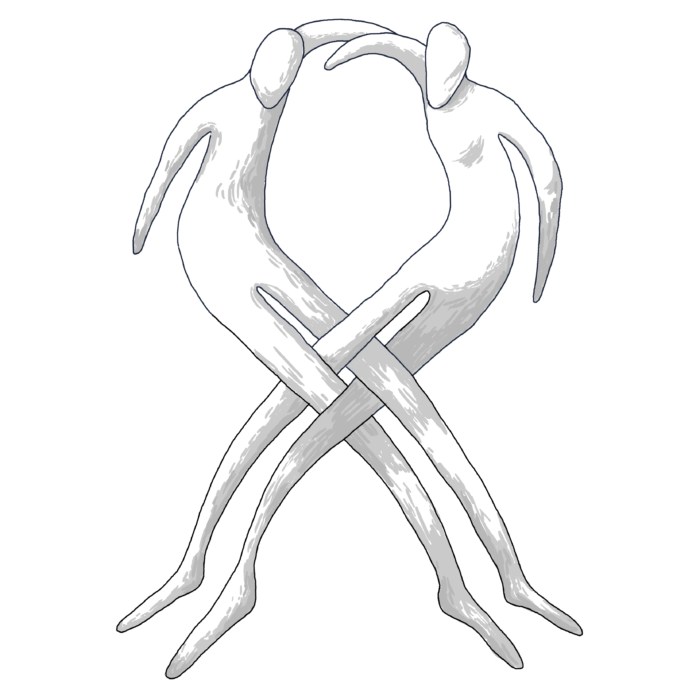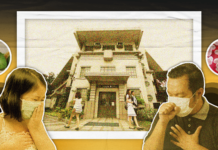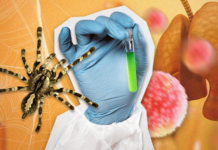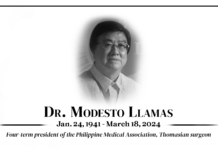HUMAN Immunodeficiency Virus (HIV) has yet to reach its statistical figure plateau in the country with majority of the cases belonging to the younger population despite efforts made by Department of Health (DOH).
Last May, the National Epidemiology Center reported that 80.05 percent of the recorded 1,098 HIV cases are of ages 15 to 34.
“This age bracket is our country’s workforce and obviously has an economic impact in the community,” Faculty of Medicine and Surgery Professor John Delgado said in an interview with the Varsitarian.
Delgado specializes in infectious diseases at the UST Hospital.
“May 2017 has the highest data since HIV was first recorded in 1984,” Delgado added. “Akala mo bababa na dahil last April bumaba ‘yong statistics from 968 to 629, then nag-spike again this May with 1,098 cases.”
Delgado explained that HIV has four clinical stages. The first stage is the asymptomatic phase while stages two and three are more progressive phases of the virus in the human body. Stage four is relative to AIDS-defining illnesses such as tuberculosis, meningitis and Pneumocystis jirovecii pneumonia.
CD4 or the so called “helper cells” are lymphocyte cells that aid in fighting against infection. A CD4 count equal or below 200 weakens one’s immune system and hints a possibility of HIV infection.
“’Pag bagsak ‘yong immune system, nagse-set in ‘yong opportunistic infection kaya ‘yon ‘yong importance ng CD4. The lower the CD4 count, the higher the chance of having multiple infections at the same time, at ‘yon ‘yong nakamamatay,” Delgado said.
Transmission of the disease
DOH calculated an average of 36 new HIV positive cases is diagnosed every day. Males who have sex with males (MSM), whether through paid sex or romantic involvement, is the most common activity for the transmission.
Meanwhile, heterosexual viral transmission is rampant among polygamous couples wherein females are more susceptible to the disease.
Other modes of spreading the disease are through mother-to-child transmission during childbirth and needle sharing among injection drug users.
“In MSM, [the] anal mucosa was not made for sexual purposes. Unlike the vaginal canal, the anal mucosa has a very thin lining making it prone to trauma during intercourse and can be damaged easily where virus proliferation first takes,” Delgado said.
Also, Delgado added that college students are at risk given that the most infected age bracket is prominent among young individuals. He said that the number one factor is internet engagement where anonymous partners lure individuals to do risky activities. Another factor is the lack of parental guidance due to students being away from family.
Therapies against virus replication
HIV can be classified into two types; HIV-1 and HIV-2. HIV-1 affects 95 percent of patients and is the most common type worldwide, while HIV-2 is often found in Africa and is much harder to cure.
Furthermore, the Epidemiology Bureau noted that both types can co-exist at the same time.
Delgado said that there is no absolute treatment to eradicate the infection nevertheless, there are therapies available that help boost CD4 count in the body and suppress virus replication.
“First step is screening to examine the patient’s blood sample then a confirmatory test follows at San Lazaro Hospital. When diagnosed positive, we have treatment hubs in the country that offers free medical services for patients,” he added.
In partnership with the Global Fund, DOH aims to eliminate HIV infection and other similar diseases by providing free treatment centers.
In NCR, treatment hubs are located at Philippine General Hospital, Research Institute for Tropical Medicine, Makati Medical Center, The Medical City, Sta. Ana Hospital, St. Luke’s Medical Center — Global City and San Lazaro Hospital.














